Now that we have networking setup, we can move onto setting up the rest of FreePBX. Let’s start by setting up a trunk to our SIP provider:
Trunks
A trunk is a connection to another PBX, in VOIP-Speak. This is a slightly different definition than when trunking is in Network-Speak, as many of the Telephony technologies are similar but most always different.
1.
Log into your PBX.
2.
Under Connectivity / Trunks, click +Add Trunk and select +Add SIP (chan_sip) Trunk:
- Trunk Name: Give this a name you can remember that is relevant to the service.
- Outbound Caller ID: Put in your phone number from the SIP provider here, if you have purchased DIDs.
- Click the Sip Settings tab when done.
3.
In the sip Settings tab:
- Trunk Name: Give it the same name as you did before.
- Peer Details: Replace everything here with this text:
type=friend
secret=<the password your SIP provider gave you>
username=<the username your SIP provider gave you>
host=<the service address that your SIP provider gave you>
dtmfmode=rfc2833
context=from-trunk
canreinvite=no
allow=ulaw
insecure=port,invite
fromdomain=<Your SIP provider’s address>
- Click the Incoming tab next:
4.
Incoming sip Settings:
- USER Details: Clear out any existing text.
- Register String: Put in <SIP Username>:<SIP Password>@<your SIP Provider.com> These values were used above.
- Click Submit when done.
6.
Now go to Reports and select Asterisk Info.
Extensions
Now that we have our trunk set, let’s setup an extension. An extension is an endpoint to where a call will “terminate” to, as well as a phone will register to.
1.
Log into your PBX.
2.
Go to Applications / Extensions in the PBX.
3.
Click + Add Extension and select + Add New Chan_Sip Extension:
- Extension: Choose an extension number
- Display Name: Enter the user of this extension (or the purpose such as “Front Desk” or “Fax”)
- Outbound CID: Enter the Phone Number you got with your SIP Provider.
- Secret: This is randomly generated, I enter something easier to remember. This will be used as the password to register phones to this extension.
- Password For New User: This is also randomly generated, leave this for now.
- Click Submit when done.
4.
Add more extensions as needed.
6.
Now click Connectivity / Firewall and choose the Network tab:
- Enter new IP or Hostname here: Enter your LAN network IP here.
- Select Trusted (Excluded from Firewall)
- Click Save when done.
7.
Finally, go to Reports / Asterisk Info and click Chan_Sip Info:
- Under Status in Chan_Sip Peers, all your extensions should show up as OK if already registered to a SIP phone.
Inbound Routes
To get a SIP Provider’s phone number to ring a phone, we’ll need to create an Inbound Route.
1.
Log into your PBX.
2.
Go to Connectivity / Inbound Routes.
3.
Click +Add Inbound Route:
- Description: I put in the SIP provider and the DID here
- DID Number: Enter the phone number your SIP Provider gave you.
- Set Destination: Choose Extensions and select the extension that will ring when this number is dialed.
- Click Submit when done.
Outbound Routes
To place a call that is not local to the PBX (an extension), we’ll have to make an outbound route to the SIP Provider.
1.
Log into your PBX.
2.
Click Connectivity / Outbound Routes
3.
Click + Add Outbound Route:
- Route Name: Enter a route name
- Trunk Sequence Matched Routes: Select the trunk you made in the previous steps.
- Click Dial Patterns tab when done.
4.
Click the “Dial patterns wizards” button and select all Digit Pattern and US buttons:
- Click all the Digit Patterns and US / Long Distance buttons.
- Click Generate Routes when done.
Now you should be able to receive and place calls using your SIP Provider.
That completes this tutorial.

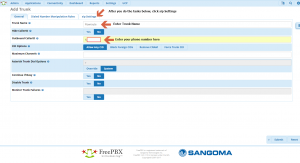
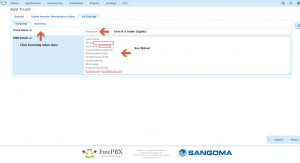
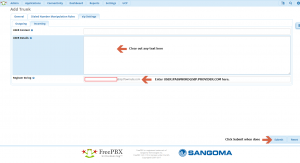

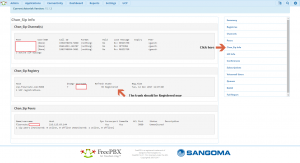
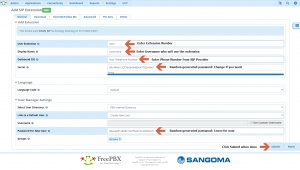
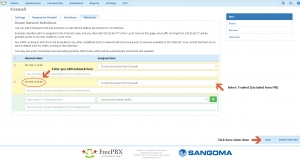
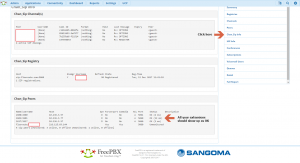
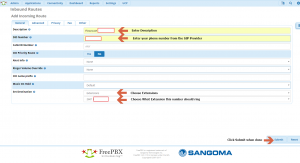
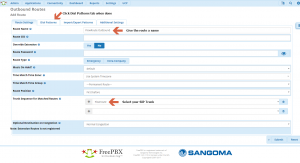
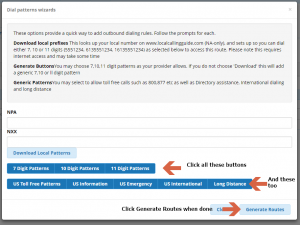
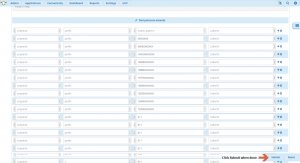
test comment here